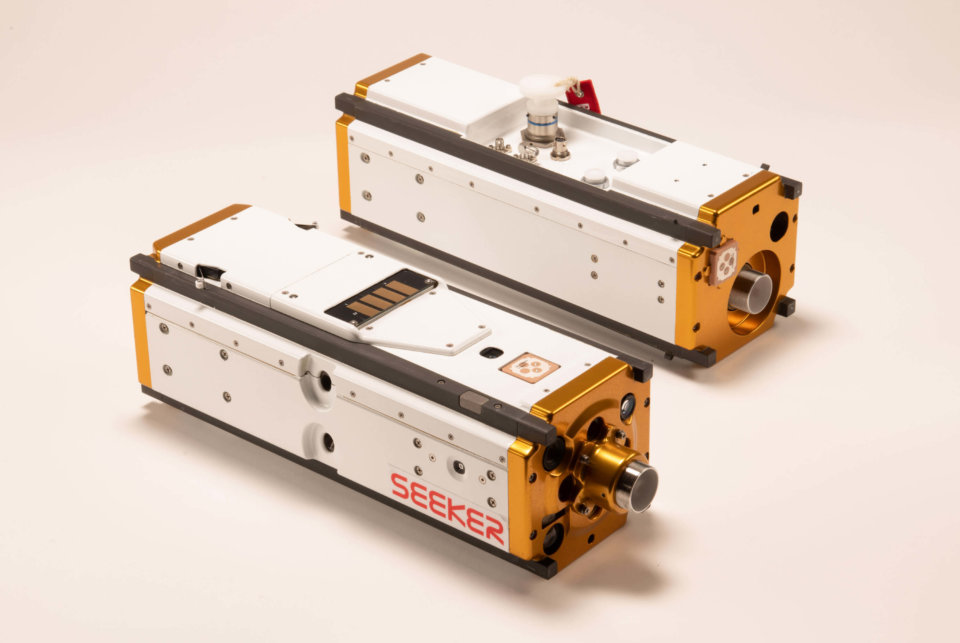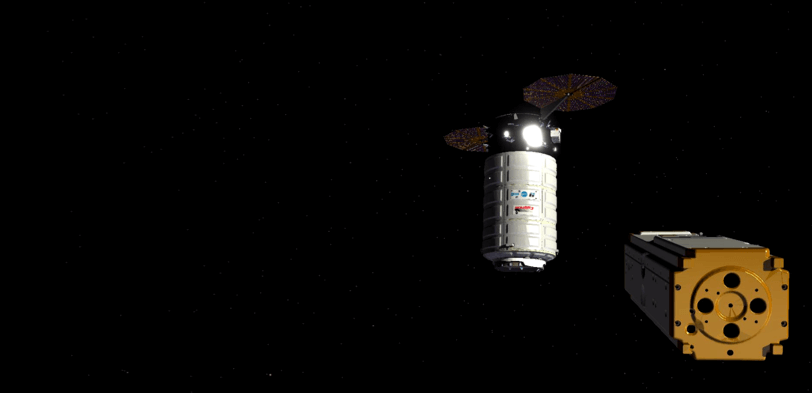The Technology House (TTH), a product development service provider, has used Digital Light Synthesis (DLS) 3D printing technology from Silicon-valley based Carbon to help produce autonomous robotic systems as part of the SEEKER project for NASA.
Costing $3 million, the SEEKER project from NASA comprises of two free flying autonomous robots, Seeker and Kenobi, designed to inspect and monitor such craft while in space. Seeker and Kenobi were launched aboard the Cygnus spacecraft from global security company Northrop Grumman, a commercial partner of NASA, as part of the first demonstration of the free flyer technology for autonomous robotic inspection from NASA. Cygnus was launched from NASA’s Wallops Flight Facility on April 17th to carry out Northrop Grumman’s Commercial Resupply Services mission to deliver supplies to the International Space Station (ISS).
TTH utilized Carbon’s M2 3D printer in conjunction with Cyanate Ester 221 (CE 221) to produce four high-performance thrusters for the cold-gas propulsion system within the Seeker robots for NASA. According to TTH, the SEEKER project contains the “first certified plastic additive manufactured parts in actual space.”

The force behind Seeker and Kenobi
The Seeker robots are CubeSats (miniaturized satellites) each approximately 10 cm x 10 cm x 30 cm in length. Designed to free fly externally around spaceships to inspect for malfunctions (like leaks), the Seeker devices utilize a cold-gas propulsion system containing 12, 0.1N thrusters, and a Guidance Navigation and Control (GN&C) system to maneuver in orbit, featuring a convoluted neural network. The Seeker CubeSat will inspect the Cygnus spacecraft, whereas the Kenobi acts as a translator between Cygnus and the Seeker.
With a year from project initiation to integration for launch, NASA adopted a rapid iterative design approach to quickly produce the Seeker robots whilst making sure they meet the quality requirements. The team developing the Seeker ran into a problem when developing the cold gas thruster system of the autonomous robot, however. Within one ‘face’ of the CubeSat, a series of components are integrated to allow the GN&C system to operate. However on this same face in a 10 x 10 cm area, NASA also needed to integrate four small rocket thrusters for the cold gas thruster system to operate effectively. NASA required a small and complex part with several holes and passages that could accommodate the various critical components required for the cold-gas propulsion system, which could not be produced using traditional machining or tooling manufacturing methods.

Carbon Platform supports iterative design approach
To overcome the hurdle, TTH supported NASA with 3D printing technology from Carbon to create the part, due to the repeatability of the manufacturing process which helps to ensure end-use level part quality. Carbon’s CE 221 was identified as a suitable lightweight material to create the high-performance, space-bound part because of its high strength, accuracy and temperature allowances. However, NASA uses a timely certification process for new technology and materials for components, and prior to Seeker, no 3D printed pressurized plastic components had been certified by NASA for ground and flight use around operators. There was skepticism at NASA that any non-metallic material could meet the requirements.
Therefore, the 3D printed CE 221 components were the subject of extensive development and qualification tests from the team at NASA and TTH to understand the capability and process variations of the component. Over 100 parts were pressurized to failure, in order to improve structural design and sealing interfaces, with thrusters tested to rupture at pressures above 1200 psi. TTH and NASA also worked to improve the accuracy and printability of the part through additional design elements, with TTH also amending its post-processing and cure time, to ensure predictable mechanical properties and part performance. This helped to establish a repeatable process that allowed the team to control the process variation of the part to hit critical tolerances.

With its iterative design approach, NASA was able to complete over 10 design iterations of the part in order to produce the complex component, with the CE 221 material meeting the safety and performance requirements, and the final part validated for use in flight. The part required no post-machining as well, thus speeding up NASA’s turnaround time and ultimately reducing the time to certification. Greg Cebular, Vice President of Sales at TTH, stressed the importance of using Carbon’s CE 221 in manufacturing the part for NASA: ”Other plastics used in additive manufacturing wouldn’t be able to hold up to everything you’re going to get through this whole process. It has to hold up to being pressurized, to the cold of space, to the heat from the sun.”
“Really it was the high-temperature Carbon CE 221 material that drove this. It was the whole reason that NASA was able to produce this on an additive technology.”
3D printing in the pipeline for NASA
As the demonstration flight of the Seeker project from NASA contains the first certified plastic additive manufactured parts in actual space, NASA is continuing to utilize 3D printing in its future off-world projects. Engineers at NASA are using 3D printing to help insulate vulnerable parts of its new deep space rocket that will take astronauts to the moon in 2024.
NASA is also proceeding with its mission to bring 3D printed construction to Mars in its 3D Printed Habitat Centennial Challenge. The challenge entered its final stages recently, with the organization revealing the winners of Phase 3 of the competition.
You can now cast your vote for the third annual 3D Printing Industry Awards. Help decide this year’s winners now.
Subscribe to the 3D Printing Industry newsletter for the latest news in additive manufacturing. You can also keep connected by following us on Twitter and liking us on Facebook.
Looking for a career in additive manufacturing? Visit 3D Printing Jobs for a selection of roles in the industry.
Featured image shows the Seeker and Kenobi free flying robots. Photo via Carbon.


